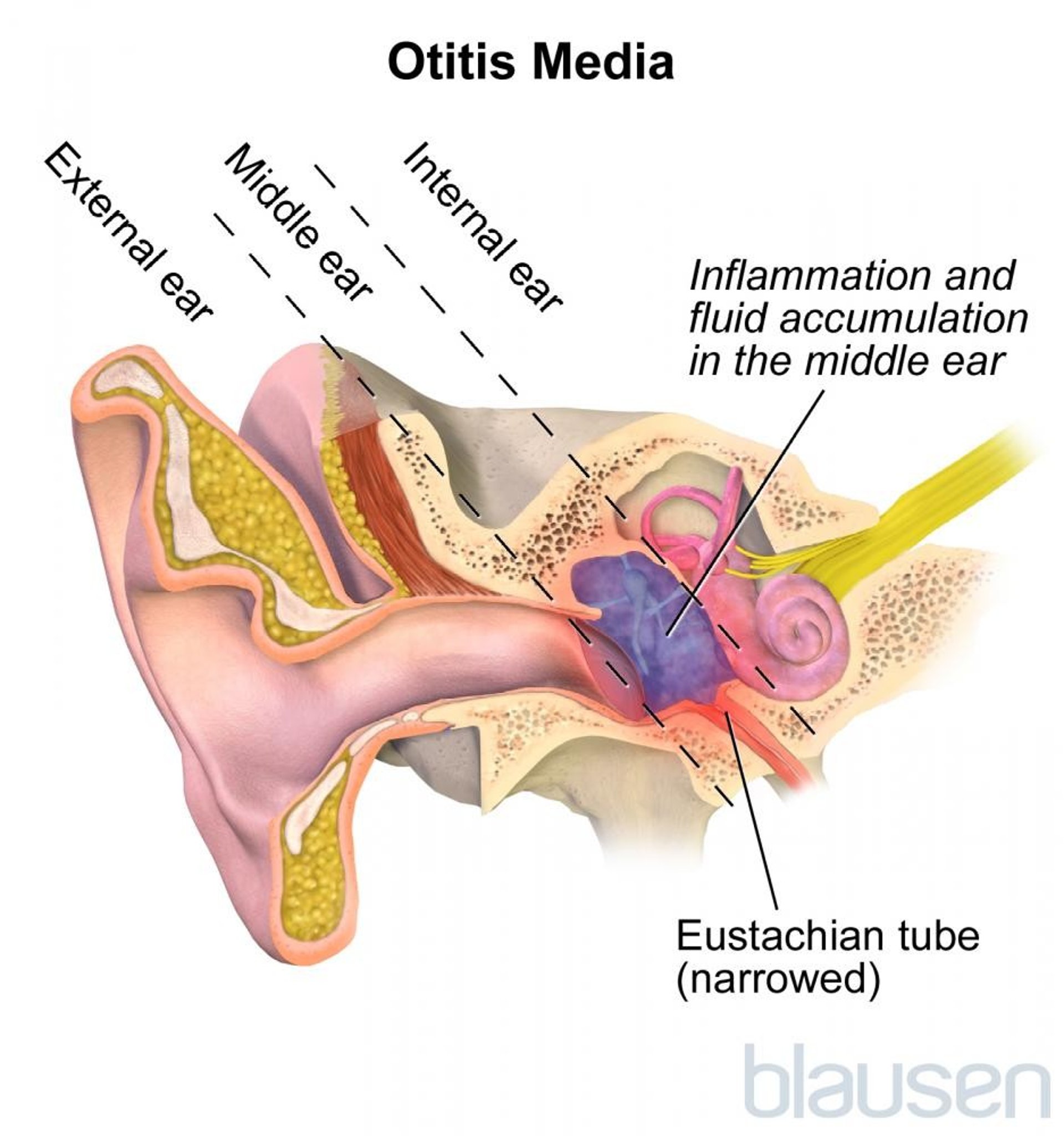Topic Resources
What is a middle ear infection?
The middle ear is the space just behind the eardrum. Germs can get in the middle ear and cause an infection. A middle ear infection is also called otitis media. An acute middle ear infection is one that starts quickly and causes lots of symptoms right away.
Children with an ear infection have ear pain
They may have a fever and trouble sleeping
Doctors will look inside your child's ear with a light
Most ear infections get better on their own without antibiotics
Your child will likely need medicine for pain and fever
What causes ear infections?
The same germs (viruses) that cause the common cold cause most ear infections. Sometimes other types of germs called bacteria cause ear infections.
What are the symptoms of an ear infection?
The infection makes fluid build up in the middle ear. This fluid makes the eardrum bulge and hurt. If the eardrum bulges a lot, it can pop (rupture). Symptoms include:
Ear pain—very young children who can't talk may pull at their ear or cry
Fever
Cranky mood and trouble sleeping
Trouble hearing
Sometimes blood or fluid drains from the child’s ear if the eardrum ruptures
Rarely, ear infections can cause severe complications if bacteria spread to nearby areas, such as:
The bone next to the ear (causes pain behind the ear)
The inner ear (causes dizziness and trouble hearing)
The brain (causes headaches, confusion, and meningitis)
How can doctors tell if my child has an ear infection?
Doctors will look inside your child's ears with a special light. They are checking to see if:
Your child’s eardrum is bulging or red
There's fluid behind the eardrum
They may need to first clean wax from your child's ear so they can see more clearly.
They may squeeze air into your child’s ear to see if the eardrum moves. If it doesn't move as much as it should, your child may have an ear infection.
How is an ear infection treated?
Medicine for your child’s symptoms
Treat ear pain and fever with medicine such as acetaminophen or ibuprofenTreat ear pain and fever with medicine such as acetaminophen or ibuprofen
Some ear drops reduce pain but only for about 30 minutes, so many doctors don't use them. Decongestants or antihistamines, found in cold medicines, won't help your child.
Antibiotics
Doctors used to give antibiotics to all children with ear infections. Now doctors know most ear infections go away on their own. However, doctors give antibiotics if your child is:
Very young
Very sick
Doesn't get better quickly or gets worse
Eardrum puncture
Pain from a bulging eardrum may need to be treated with eardrum puncture. In this treatment, doctors poke a tiny hole in the eardrum so the infected fluid can drain out. The hole will heal on its own.
How can I prevent ear infections in my child?
Have your child get regular vaccine shots (for infections, such as pneumonia and the flu, that can cause ear infections)
Don’t let your child sleep with a bottle (drinking while lying down can trap fluid in the ear)
Keep your child away from smokers


